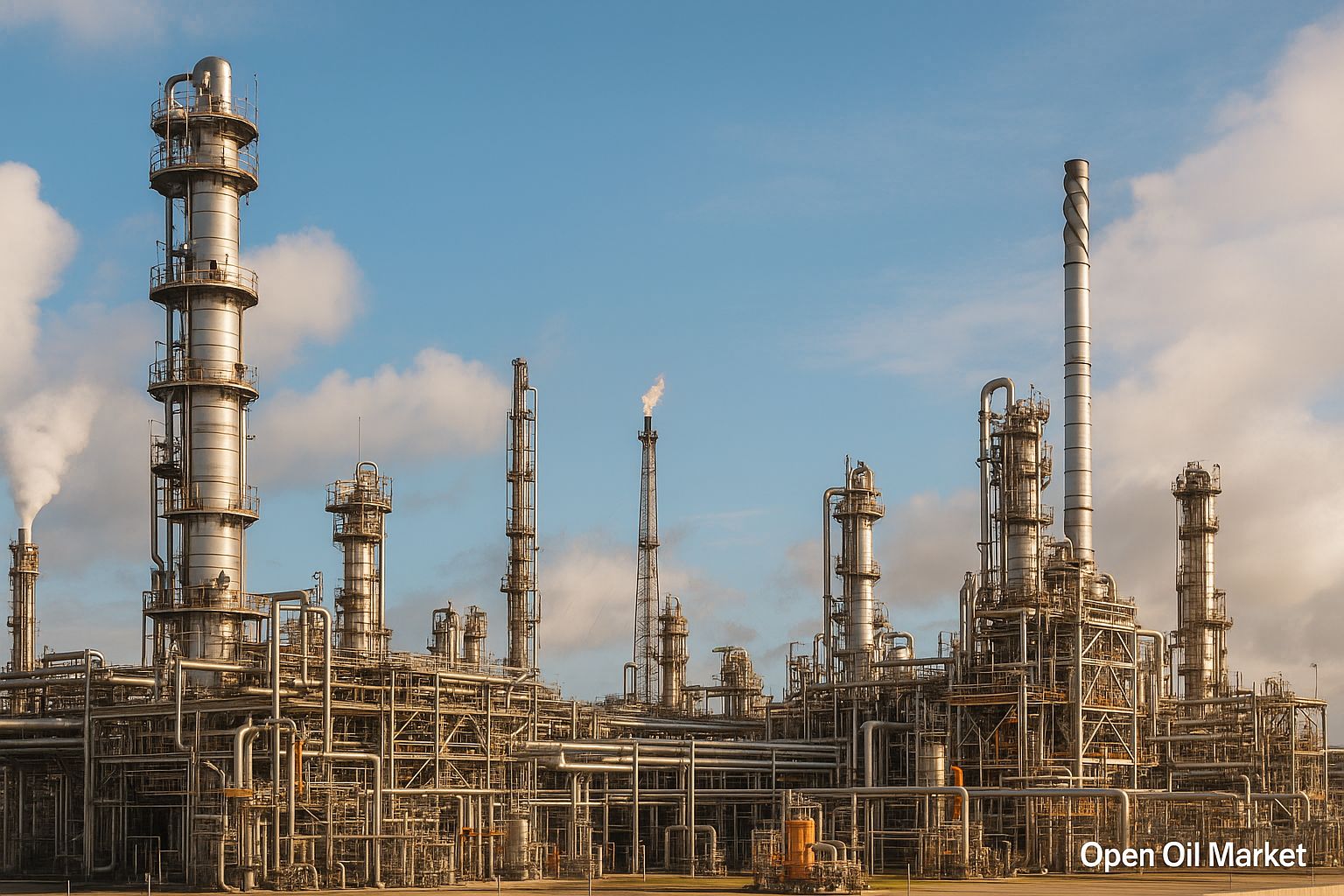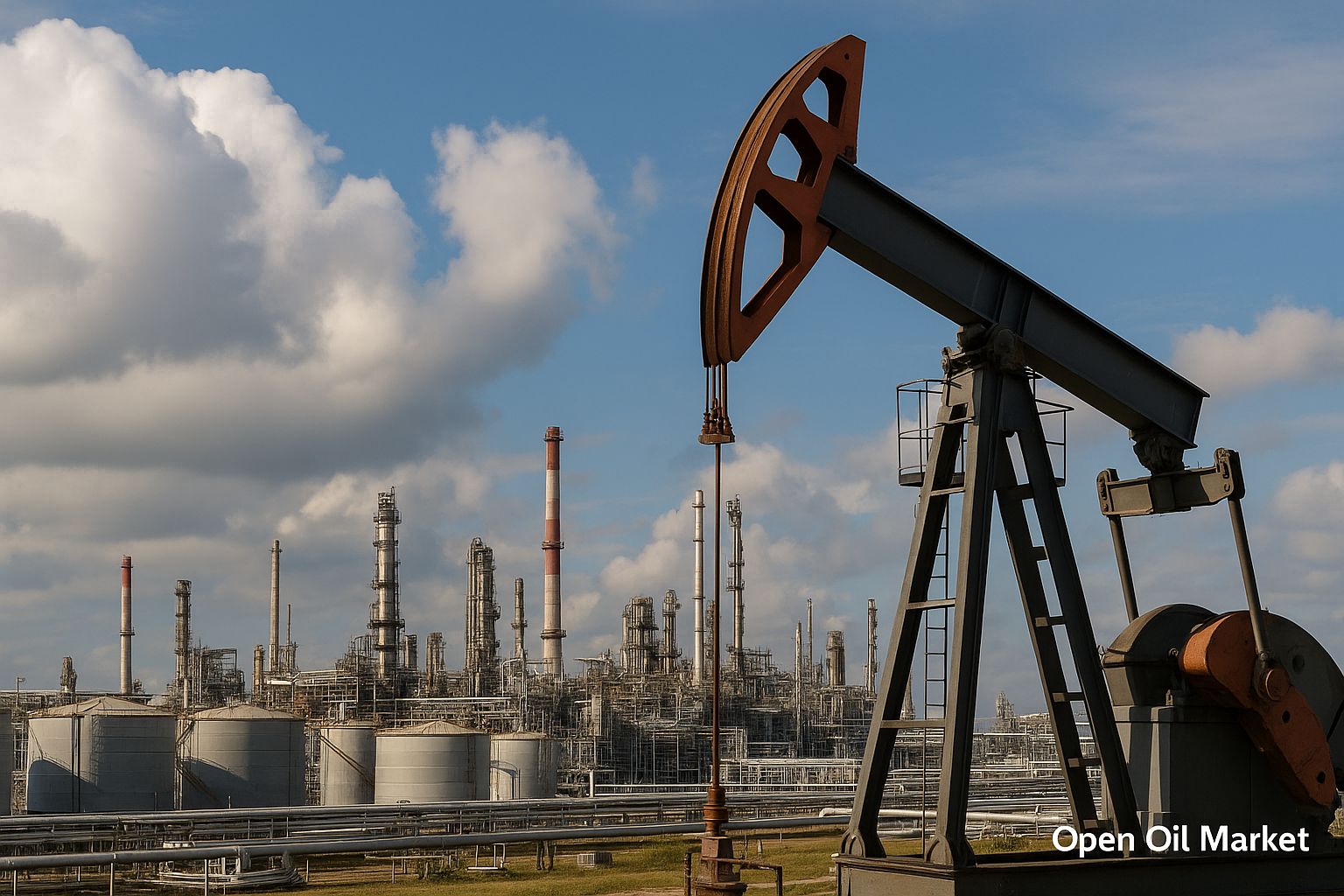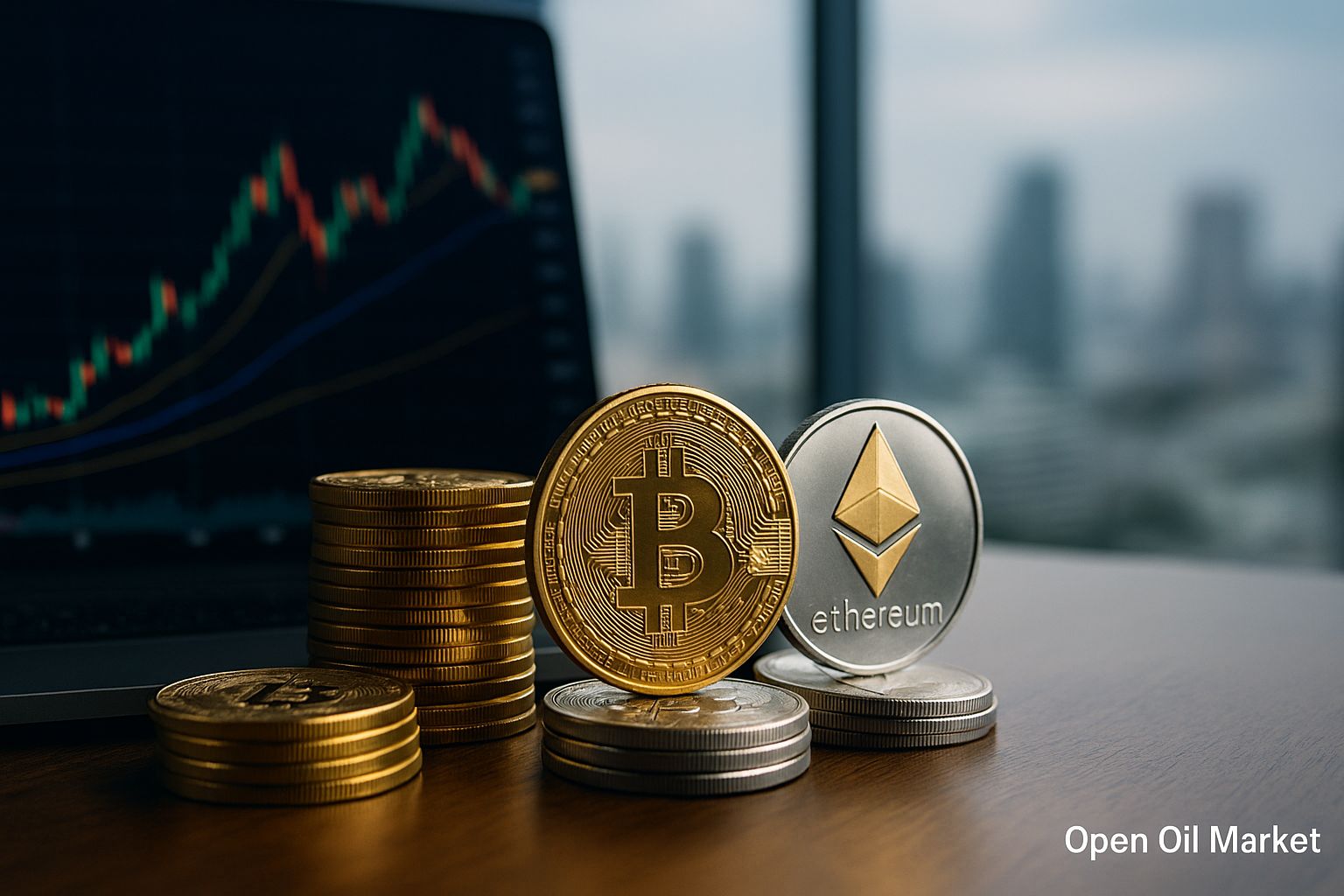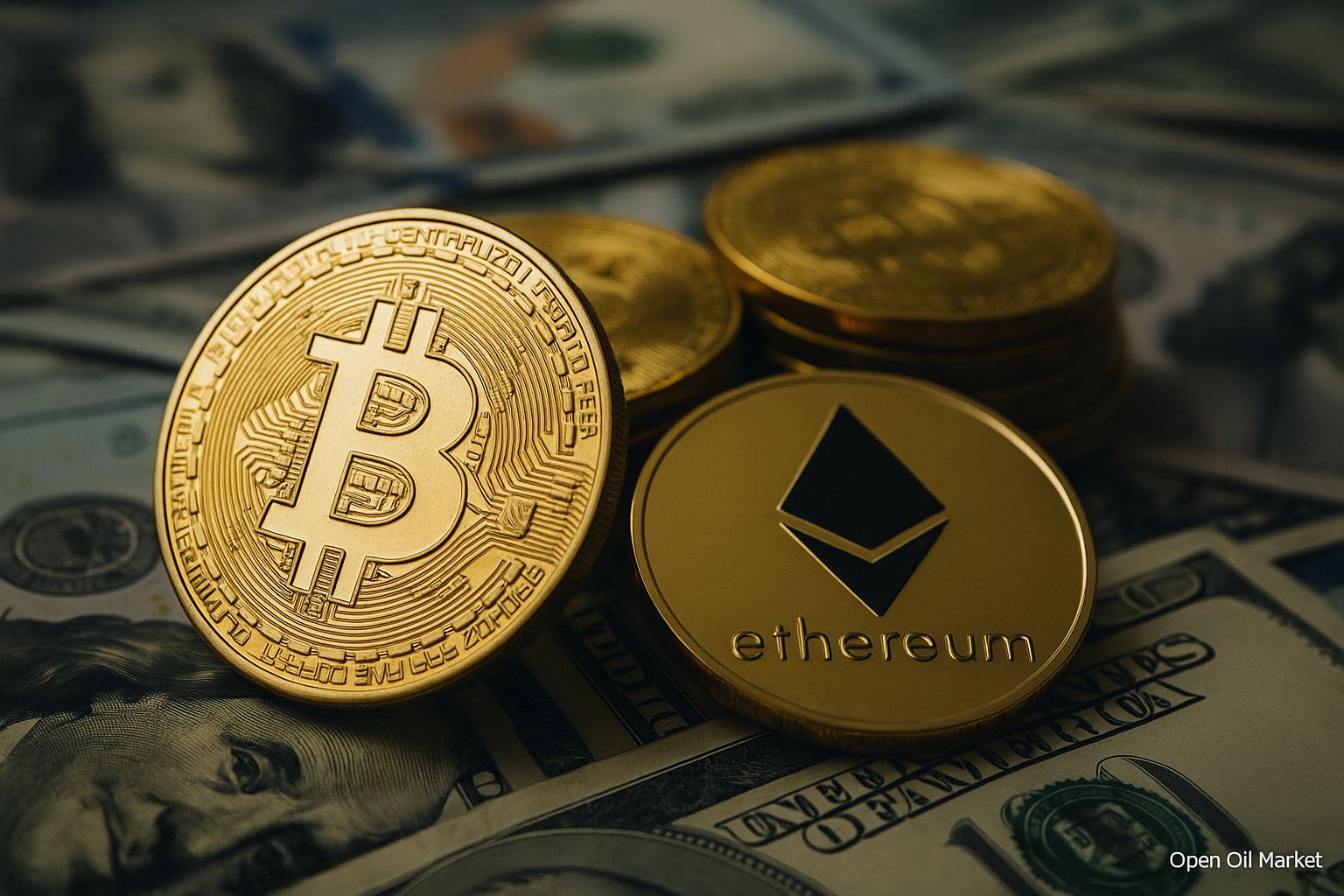
Current News in the Oil and Gas and Energy Sector as of November 13, 2025: Deals, Geopolitics, Exports, Oil and Gas Production, Impact of Sanctions, and Global Market Balance. Analysis for Investors and Stakeholders in the Energy Sector.
The latest events in the fuel and energy complex (FEC) as of November 13, 2025, draw significant attention from investors and market participants due to their complexities. There is still no breakthrough in relations between Russia and the West; in fact, the United States has imposed new sanctions against major Russian oil companies, indicating a further escalation in sanctions confrontation. The global oil market, previously pressured by oversupply and slowing demand, remains in a fragile balance: Brent prices are holding around the mid-$60 range (approximately $64–66), reflecting a balance of opposing factors. The European gas market is entering winter with record inventories: EU underground gas storage facilities are more than 95% full, ensuring a reliable reserve and keeping prices at a relatively moderate level. In the meantime, the global energy transition is reaching new heights – many countries are recording record generation from renewable sources, although traditional resources still need to support system stability. In Russia, following a spike in fuel prices, the authorities have extended the export ban on gasoline until the end of the year and limited diesel exports, aiming to stabilize the domestic market. Below is a detailed overview of key news and trends in the oil, gas, electricity, and commodity sectors as of the current date.
Oil Market: Threat of Oversupply and Slowing Demand
Global oil prices continue to demonstrate relative stability at low levels. The North Sea benchmark, Brent, is trading around $65 per barrel, while American WTI is close to $60. Current prices are approximately 10% lower than a year ago, reflecting a gradual normalization of the market after the extreme peaks of the 2022–2023 energy crisis. The balance is maintained by a combination of several factors:
- Increase in OPEC+ Production. The oil alliance has been steadily increasing supply since the beginning of the year. By fall 2025, the total production quota of key participants in the deal has practically returned to pre-pandemic levels: monthly easing of restrictions since spring has led to an increase in production of several million barrels per day. This increase in supply has already been reflected in rising global oil and petroleum product stocks, intensifying pressure on prices.
- Slowing Demand. The rate of global oil consumption growth has significantly decreased. The International Energy Agency (IEA) forecasts a demand increase of only about +0.7 million barrels per day in 2025 (compared to +2.5 million in 2023). OPEC estimates the demand growth at about +1.3 million b/d. Economic slowdown, particularly in China's industrial sector, and the effects of previously high prices have stimulated energy conservation and restrained consumer appetite.
- Geopolitics and Sanctions. The ongoing conflict surrounding Ukraine and lack of progress in negotiations mean that sanctions pressure on the Russian oil and gas sector remains, and in some cases, intensifies. At the end of October, the U.S. administration expanded sanctions for the first time in a long while, including the largest oil companies in Russia. These measures are forcing trade flows to realign: for instance, Indian refineries are already signaling readiness to reduce purchases of Russian oil to avoid secondary sanctions. On one hand, such steps increase uncertainty and create a risk premium in oil prices. On the other hand, global supplies are still being redirected through alternative routes, and there has been no immediate shortage of raw materials in the market. As a result, oil prices fluctuate within a narrow range, receiving no impetus for a new rally or collapse.
The cumulative impact of these factors is forming a moderate oversupply over demand. The market is balancing at the edge of surplus, and exchange prices are confidently holding notably below last year's maxima. Many analysts warn that if current trends continue, the average annual Brent price could fall to around $50 per barrel by 2026. Meanwhile, market participants are maintaining a wait-and-see stance, monitoring both fundamental indicators (stocks, production levels) and political signals from OPEC+ and key powers.
Gas Market: Full European Storage Ensures Price Stability
The gas market remains focused on Europe, which successfully completed the season for injecting fuel. EU countries achieved storage levels exceeding 95% of total capacity—significantly above the target of 90% set at the beginning of winter and a record for recent years. Such a high buffer before the heating season strengthens the region's energy security. By mid-November, gas volumes in underground storage facilities in several Western European countries were approximately equal to the gas volume present a year ago at the peak of winter, allowing for an optimistic outlook for the upcoming cold months.
High inventories and stable liquefied natural gas (LNG) supplies are maintaining a relatively calm pricing environment in the European gas market. Futures on the Dutch TTF hub are oscillating around €31–33/MWh (approximately $380 per thousand cubic meters)—significantly below the crisis peaks of 2022. Current demand and supply in Europe are close to balance: moderate consumption and a warm early autumn allowed reserves to be increased without causing price jumps. EU importers continue to actively purchase LNG globally—regasification terminals are operating at high capacity, receiving tankers from the U.S., Qatar, Africa, Australia, and other regions. This compensates for the cessation of pipeline supplies from Russia: since January 2025, the transit of Russian gas through Ukraine has completely stopped, and the Yamal-Europe pipeline has been closed due to sanctions, making the Turkish Stream the only pipeline route from the Russian Federation to the EU (around 50 million cubic meters per day, a mere fraction of previous volumes).
Consequently, through supply diversification, Europe is entering winter with virtually no dependency on Russian gas. Risks remain, of course: abnormally cold weather could increase fuel consumption, and competition with Asia for spot LNG cargoes could intensify if the economies of China and other countries in the region accelerate. Nevertheless, the balance in the European gas market currently appears stable, and prices are comparatively low. This situation is favorable for Europe's industry and energy sector ahead of peak loads, reducing the likelihood of a repeat of the price shocks witnessed in recent history.
International Politics: Energy Partnership in the West and New Sanctions
Western countries are taking coordinated steps to restructure global energy ties amid rising geopolitical tensions. In early November, major agreements were signed at an energy forum in Athens aimed at reducing Russia's influence on the European gas market. U.S. company ExxonMobil signed a contract for natural gas exploration and production in Greek waters in collaboration with local partners. Concurrently, Greece concluded its first long-term LNG import deal with the U.S.: starting in 2030, the country will receive at least 0.7 billion cubic meters of LNG annually, with potential increases to 2 billion cubic meters. These deals fit into the broader EU strategy to replace Russian energy resources: in July, the EU and the U.S. signed a trade agreement committing Europe to procure around $250 billion annually in American energy resources (oil, gas, nuclear fuel) over the next three years.
American officials openly state their intention to displace "every last molecule" of Russian gas from the markets of Western Europe. This new energy partnership is already yielding results: the European market has rapidly reoriented towards LNG, and countries like Greece are transforming from end consumers of Russian gas into hubs for distributing American fuel across Europe. Simultaneously, the EU is tightening its own restrictions: a plan for a complete ban on imports of Russian LNG by 2027 has been approved, following earlier embargoes on oil and petroleum products from the Russian Federation. Thus, the energy map of Europe is rapidly changing—the share of the U.S., Middle East, and other alternative suppliers is steadily rising.
However, the tightening of sanctions has collateral effects for market participants. India, which has become the largest buyer of discounted Russian oil, is now forced to rethink its strategy. At the end of October, the U.S. added Russian oil companies Rosneft and Lukoil to the sanctions list, complicating financial transactions with them. Indian refiners have stated their willingness to drastically cut crude purchases from these companies to avoid losing access to the U.S. financial system and falling under secondary sanctions. According to traders, some Indian refineries have already suspended long-term contracts with Rosneft. These steps could reduce the total import of Russian oil to India (which reached record levels of 1.5–1.7 million b/d in 2025) and shift Indian demand to Middle Eastern and African suppliers, albeit at higher prices. Thus, Washington’s sanctions pressure is effectively forcing a redistribution of global oil flows: Russian companies have to offer increased discounts and focus mainly on China, Turkey, and a number of other countries that have not joined the sanctions.
India and China: Adjusting Imports and Increasing Domestic Production
The largest Asian economies continue to balance between importing energy resources and developing domestic production. India, due to sanctions pressure, finds itself at a crossroads: to maintain favorable purchases of cheap Russian oil or to avoid severing trade relations with the West. Until recently, India had been actively increasing its imports of Russian oil, taking significant discounts (an average of $5–10 off the Brent price for Urals). This allowed Russian oil to account for about 34% of India's crude import structure. However, new U.S. sanctions against Rosneft and Lukoil, as well as the threat of high tariffs on Indian goods in the U.S., are forcing New Delhi to reduce its reliance on Russian supplies. Major Indian oil companies are signaling their readiness to virtually completely cease purchases from sanctioned Russian producers by the beginning of 2026. In the short term, India is replacing lost volumes with imports from the Middle East (Saudi Arabia, Iraq, UAE) and Africa, although this leads to a slight increase in raw material costs. Simultaneously, the Indian government is accelerating its program of developing domestic fields: after announcing a national "deepwater mission" to find oil and gas in August, state corporation ONGC has already started drilling ultra-deep wells in the Andaman Sea. Initial reports indicate promising results, raising hopes for increased domestic production and reduced reliance on imports in the future.
China, for its part, remains the largest buyer of Russian hydrocarbons, but is simultaneously focusing on expanding its domestic energy base. Beijing has not joined the Western sanctions, taking advantage of the situation to increase imports at reduced prices. Although, for the first three quarters of 2025, China reduced its oil imports from Russia by about 8% relative to last year's record (down to ~74 million tons over 9 months), Russia still ranks first among oil suppliers to China. Concurrently, Chinese companies are actively sourcing crude from Saudi Arabia, Malaysia, Brazil, and other countries, diversifying their sources. Overall oil imports by China for January–September increased by ~2.5% year-on-year, exceeding 420 million tons (approximately 11.3 million barrels per day). In addition to imports, China is increasing its domestic production: for the first three quarters of 2025, national producers extracted about 150 million tons of oil (+1–2% year-on-year) and approximately 170 billion cubic meters of natural gas (+5–6% year-on-year). The development of fields, especially offshore and hard-to-reach ones, remains a strategic priority for reducing dependence on external supplies. However, the scale of China's economy is such that in the foreseeable future, the country will maintain its status as the largest importer of energy resources: experts estimate that even with increased production, China will need to cover at least 70% of its oil needs and about 40% of its gas needs through imports. Thus, India and China – two key consumers in Asia – are adapting their energy strategies to the new global reality, combining the search for favorable import opportunities with efforts to develop their domestic production.
Energy Transition: New Records in Renewable Energy and the Role of Traditional Generation
The global transition to clean energy continues to gain momentum in 2025. Many regions have achieved impressive milestones in renewable energy. In Europe, by the end of 2024, the total electricity output from solar and wind power plants for the first time exceeded generation from coal and gas power plants, and this trend has persisted into 2025. The share of "green" electricity in the energy balance of the European Union is steadily increasing, pushing coal out after a brief return in 2022–2023. In the U.S., renewable sources now supply over 30% of electricity production; total wind and solar generation surpassed coal generation for the first time in early 2025. China maintains its world leadership in installed renewable energy capacity: dozens of gigawatts of new solar panels and wind turbines are being deployed annually, breaking previous records. According to the IEA, total investments in the global energy sector in 2025 will exceed $3 trillion, with more than half of those funds directed towards developing "green" energy, modernizing electrical grids, and energy storage systems.
The rapid growth in the share of solar and wind generation poses new challenges for energy infrastructure. Even while achieving record outputs, renewables remain variable sources – their generation depends on weather conditions and time of day. To ensure supply reliability, countries must maintain sufficient traditional generation capacity. During periods of low renewable output – such as calm weather or nighttime – gas and coal power plants are engaged to meet peak demand. During the past heating season, some European countries occasionally had to temporarily increase the load on coal power plants during windless weather, despite the environmental costs. In response to these challenges, governments and companies are actively investing in energy storage systems (industrial batteries, pumped storage plants) and "smart" grids capable of flexibly reallocating loads. Experts predict that by 2026–2027, renewable sources may take the top position globally in terms of output, finally surpassing coal. However, in the coming years, the need for reserves from traditional power plants, which play a role as insurance against outages, will remain. Thus, the global energy transition is accompanied by new records and investments but requires a delicate balance between the implementation of "green" technologies and maintaining the stability of energy systems.
Coal Sector: High Demand in Asia Amid Stable Prices
Despite the acceleration of renewable energy development, the global coal market remains a significant segment of the energy balance. Demand for coal in 2025 remains high, especially in the Asia-Pacific region. China – the largest consumer and producer of coal – continues to burn massive volumes of fuel. Annual coal production in China exceeds 4 billion tons, covering a lion's share of domestic needs. However, during peak demand periods (e.g., hot summers for air conditioning or cold winters for heating), even these colossal volumes are barely enough, and China periodically increases coal imports from countries like Indonesia, Russia, and Australia to avoid shortages. India is also increasing coal consumption alongside economic growth and electrification: national coal production is breaking records, exceeding 900 million tons per year, but rapidly growing energy demand necessitates increased imports. Other developing Asian countries (Indonesia, Vietnam, Pakistan, Bangladesh) are commissioning new coal power plants to meet the energy needs of their populations and industries.
Prices for thermal coal in 2025 have stabilized relatively after sharp spikes seen during the global energy crisis. The key Asian market (Newcastle brand Australian coal) prices are holding in the $130–150 per ton range, significantly lower than the peaks of over $400 experienced in 2022. This price correction can be attributed to the restoration of supply and demand balance: increased production in exporting countries (Australia, Indonesia, Russia, South Africa) and a slight decrease in demand in Europe and North America (where the transition away from coal has accelerated) have offset the consumption growth in Asia. As a result, the global coal market has entered a phase of relative stability. However, environmental restrictions and investments in clean energy are gradually limiting long-term growth prospects for coal demand. It is expected that global coal consumption will plateau in the coming years and then begin a slow decline as countries implement decarbonization goals. For now, coal continues to play a significant role, providing baseload generation and industrial production, especially in developing economies.
The Russian Fuel Market: Extension of Export Restrictions to Stabilize Prices
In the internal market for petroleum products in Russia, a set of measures is being implemented in the second half of 2025 to normalize the pricing situation. In September and October, there was a slight decrease in wholesale prices for gasoline and diesel fuel after a surge earlier in the summer. The Russian government, aiming to prevent shortages and another price spike, has extended temporary export restrictions on fuel. In particular, the previously imposed ban on the export of automotive gasoline for all manufacturing companies and trading intermediaries was first extended to September and then renewed until the end of the current year. At the same time, restrictions on diesel fuel exports for independent traders without their production facilities have been introduced to close loopholes for the export of scarce fuel abroad. According to Deputy Prime Minister Alexander Novak, these measures should guarantee priority supply of petroleum products to the domestic market.
Thanks to the adopted package of decisions, the situation at gas stations has stabilized significantly. Exchange prices for gasoline and diesel have receded from peak levels, and retail prices are rising at a moderate pace – around 5–6% since the beginning of the year, which is close to general inflation. Filling stations across the country are adequately supplied with fuel, including the completion of the harvesting campaign and the onset of the winter season. The government has also increased subsidized fuel sales volumes in the domestic market and tightened control over the sale of petroleum products to prevent a repeat of situations with sharp price spikes in the spring and summer. Additionally, long-term measures are under discussion—such as increasing export tariffs and adjusting the damping mechanism—to create a more sustainable supply system for the domestic market.
As a result of the efforts made, the domestic fuel market in Russia has entered the winter period in a relatively balanced state. Authorities have managed to curb price spirals and create inventory reserves. Market participants note that the future price dynamics will depend on the situation in the global market (the ruble exchange rate, oil prices) and on the discipline in enforcing the imposed restrictions. Nevertheless, at this moment, the Russian fuel sector shows signs of stabilization, which is especially important for the economy and the population during the season of high energy consumption.




